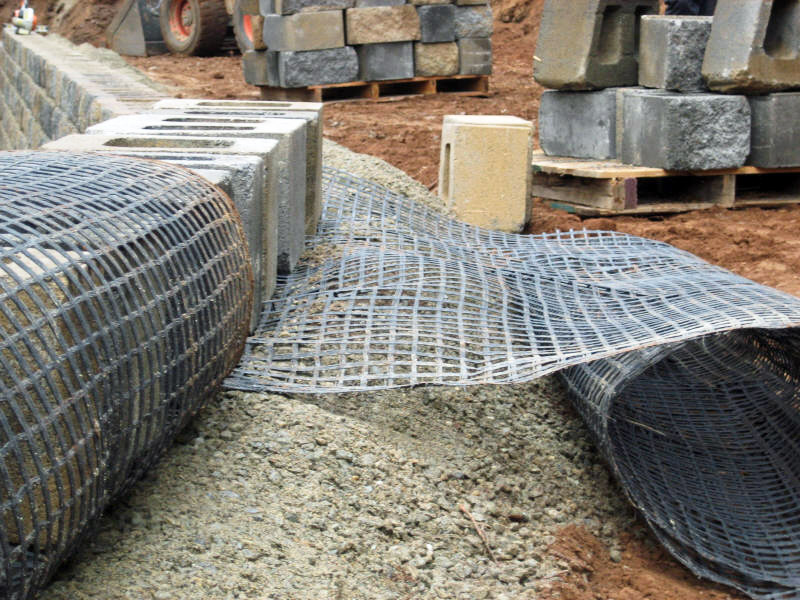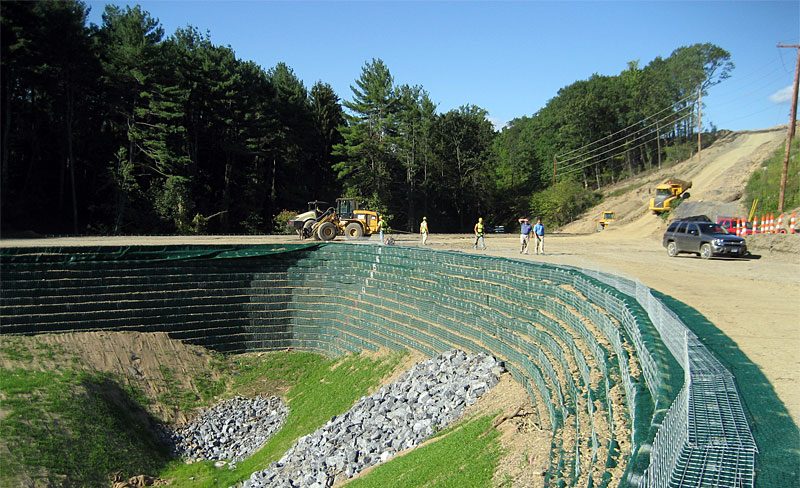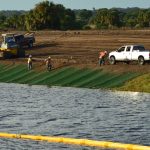How Geosynthetic Reinforced Soil Walls Save Resources and Money
It’s safe to say that civil engineers face countless challenges when trying to stabilize structures and support the soil. From balancing resources and budgets to completing maintenance and ensuring durability, there is a lot that goes into civil engineering projects.This is where IWT Cargo-Guard and geosynthetic reinforced soil walls come into play.
What are Geosynthetic Reinforced Soil Walls?
First, it’s important to understand what reinforced soil walls are. These types of rigid retaining walls laterally support unstable soil and resist the pressure of the soil they are holding back. In other words, if it weren’t for reinforced soil walls, you’d be driving on immense mounds of soil instead of asphalt.
Wall height and site conditions play huge factors in how soil walls must be constructed. More often than not, they must be reinforced with geosynthetic materials such as geogrids and geotextiles in order to increase their mass and stability. This leads us to our next question:

What are Geogrids?
Geogrids are grid structures made out of polymeric material. They are formed by horizontally weaving or knitting intersecting ribs with appropriate apertures. In other words, they interlock with surrounding soil and sediment to increase structural stability and mass. The geogrids typically separate as well, adding another layer of reinforcement to the lifts in the soil wall.
Most importantly, geogrids are designed to resist creep. This is the gradual change of a structure’s shape and position due to prolonged stress or high temperatures. They help to “toughen up” the soil wall so that it can hold back greater loads at even steeper angles. What more could you ask for? Perhaps that aforementioned resource and money saving?
Don’t Forget About Geotextiles!
Before diving into the benefits of geosynthetic reinforced walls, it’s important to become familiar with other helpful materials like Geotextiles. Geotextiles are permeable fabrics used to cover dirt and rocks. In the case of soil walls, geotextiles can be especially useful in keeping any loose topsoil from migrating into the reinforced gravel backfill. These flexible fabrics are usually knitted or matted together by heat-sealing or needle punching.
Additionally, high strength geotextiles can even be used in conjunction with wire form baskets, which wrap around and face the layers of the soil wall to provide even more protection.From separation and filtration to drainage and reinforcement, geotextiles are extremely versatile.
The Benefits of Geosynthetic Reinforced Soil Walls
From ever-changing schedules to scant resources and manpower, you have plenty of obstacles in your way as a civil engineer. However, geosynthetic reinforced soil walls are here to help. Check out the boundless amount of benefits they provide:
Less Logistics
There is nothing worse than having to coordinate countless deliveries of different resources and materials in order to prepare a jobsite. Geosynthetic reinforced soil walls make things easier. They utilize on-site resources and don’t require excessive excavation. In addition, they increase construction speed and cut overall cost.
More Money
Geosynthetic reinforced soil walls are incredibly cost-effective. Thanks to their apertures which work with a wide range of fills, less expensive soils can easily be used. They also increase developable areas without the expense of costly and unattractive retaining walls.
Superior Strength
Earthquakes and landslides are no match for geosynthetic reinforced soil walls. Their long-term seismic durability and interlocking technology have proven to withstand natural disasters and resist creep. Micro-organisms, chemicals, UV radiation, and mechanical damage can’t compete with geogrids either. Clearly, they provide a superior level of resistance and strength.
Environmentally Friendly
Above all, geosynthetic reinforced soil walls have proven to be environmentally friendly. While other materials like cement create high CO2 emissions when manufactured, geosynthetics produce only a fraction in comparison. In addition, the amount of cement needed to complete a project far exceeds the amount of geogrids or geotextiles needed to complete the same project. We promise, the environment will thank you later.

Are You Ready to Reap the Rewards of Geosynthetics?
To take advantage of all the above benefits, look no further than IWT Cargo-Guard. We provide the highest quality geogrids, geotextiles and other products so that your geosynthetic reinforced soil walls can stand the test of time. Whatever project you’re working on, whether you’re installing a retaining wall or constructing a highway, we’re here to help with all of your infrastructure needs! Contact us today to save time, money, and ultimately the environment.






